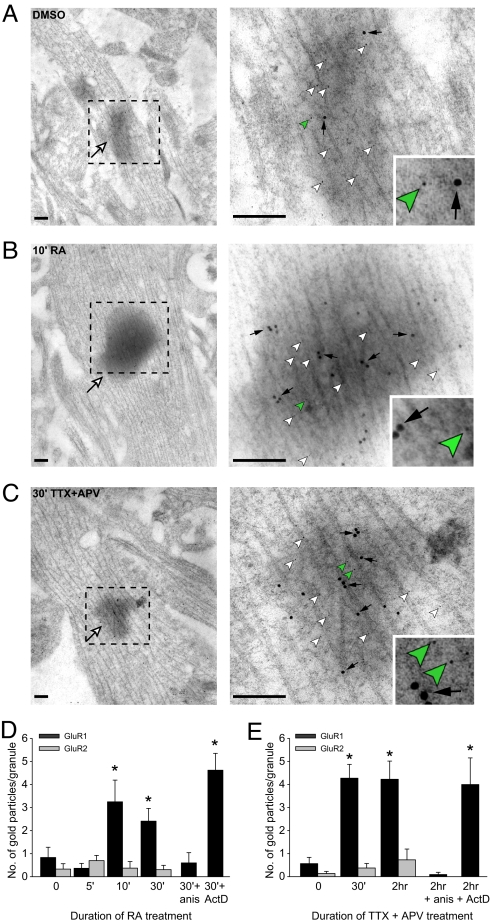Fig. 4.
RA and activity blockade induce an increase in GluR1 immunoreactivity in dendritic RNA granules. (A–C) Double ImmunoGold labeling of FMRP (5-nm gold, arrowheads) and GluR1 (15-nm gold, black arrows) in dendritic RNA granules (white arrows) observed at low (Left) and high (Right) magnifications. Insets show zoomed-in images of the 5-nm gold particles next to the green arrowheads. (Scale bars: 200 nm.) (A) Basal conditions. (B) RA treatment (10 min). (C) Activity blockade with TTX and APV (30 min). (D) Quantification of GluR1 and GluR2 gold particles in RNA granules after RA treatment. RA treatment for 10 min or 30 min selectively increased GluR1 levels and was blocked by anisomycin (anis) but not actinomycin D (ActD; n = 15 RNA granules per group from two experiments. *, P < 0.05). (E) Quantification of GluR1 and GluR2 gold particles in RNA granules under activity blockade. TTX and APV treatment for 30 min and 2 h selectively increased GluR1 levels and was blocked by anisomycin but not actinomycin D (n = 30 RNA granules per group from three experiments. *, P < 1 × 10−5).

